The discovery of the fossilised remains of a creature that looks a little like a giant beak-less chicken has led scientists to a striking hypothesis: at one time all dinosaurs had feathers.
Researchers were aware that early flesh-eating dinosaurs had feathers, but the finding of the metre-long herbivore on a Siberian river bank has led experts to conclude that all dinosaurs from the Triassic period – more than 200m years ago – were feathered.
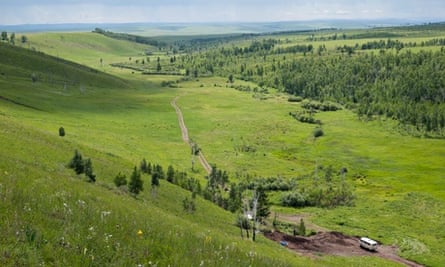
As dinosaurs evolved and in some cases developed armour, they lost the feathers, which were probably used for insulation and communication rather than flight.
One of the scientists involved in the study of the new dinosaur, Professor Michael Benton, from the University of Bristol, said it was a very significant discovery.
"This little chap from Siberia has feathers without a doubt. The conclusion we are tentatively putting forward is that feathers were present in all dinosaurs."
Benton said the feathers kept dinosaurs warm, meaning that unlike cold-blooded lizards, they were able to operate in colder temperatures and at night. As dinosaurs grew bigger, feathers would have hindered them by making them too warm and compromised their defensive armour.

It has been accepted that birds evolved from dinosaurs and in the mid-90s dinosaurs with feathers were found in China. However, those feathered dinosaurs were flesh-eating theropods.
The fresh evidence that vegetarian dinosaurs were also cloaked in feathers was found at a site called Kulinda on the banks of the Olov river in Siberia. They found fossil remains showing it had scales on its tail and shins and short bristles on its head and back. But the thrilling discovery was feathers preserved as carbon-rich films on the rock.
These were well-preserved apparently because the animal's carcass had not been picked over by scavengers but were probably washed away by a river and then encased in mud.
The new dinosaur has been named Kulindadromeus zabaikalicus. It was a plant-eater with long hind legs and short arms and five strong fingers. Six skulls and several hundred partial skeletons were found at Kulinda.
The findings are published in a paper in the journal Science. Pascal Godefroit, the lead author, from the Royal Belgian Institute of Natural History in Brussels, said he was amazed when he realised the new dinosaur's limbs had been covered in feathers. "Our new find clinches it: all dinosaurs had feathers, or at least the potential to sprout feathers."
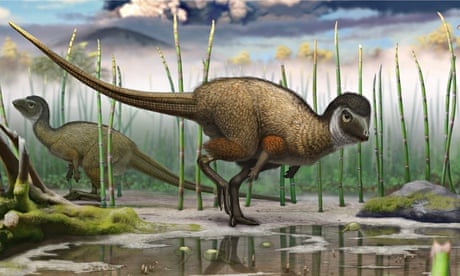

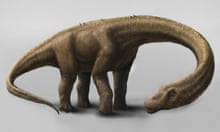
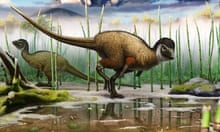
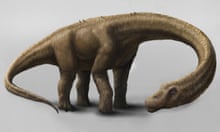

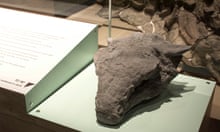

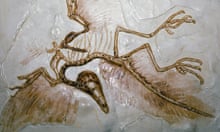
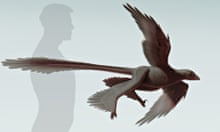

Comments (…)
Sign in or create your Guardian account to join the discussion